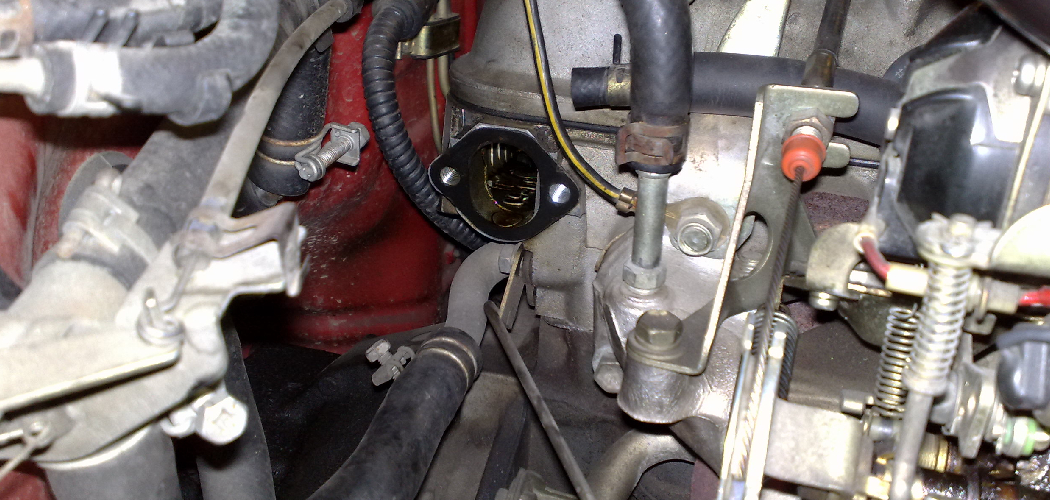After installing a new fuel pump, there are several critical steps you should follow to ensure your car starts and runs smoothly. The process involves priming the fuel system, ensuring there are no leaks, and checking that the fuel pump is operating correctly. This initial phase is crucial as it preps the system and lays the groundwork for a successful start-up.
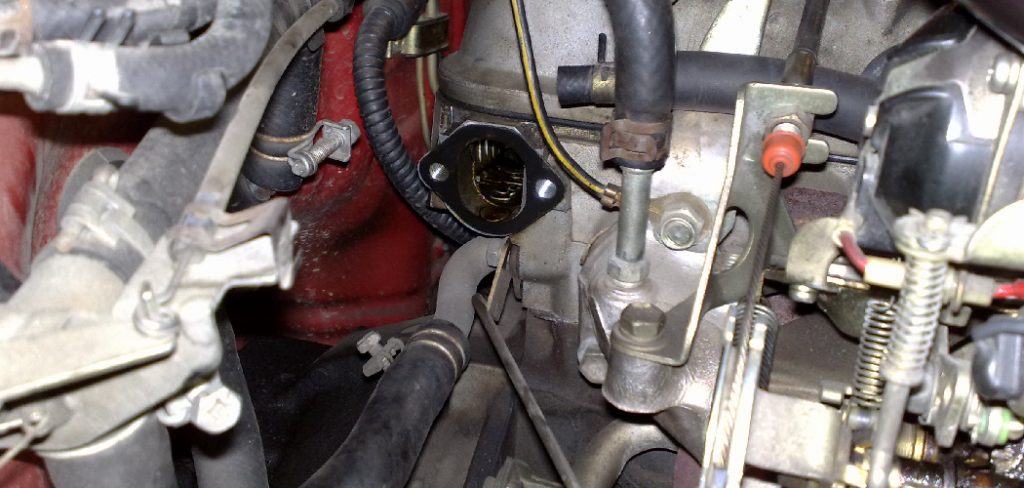
In the subsequent sections on how to start car after replacing fuel pump, we’ll guide you through a detailed, step-by-step procedure to start your car with a fuel pump replacement designed to get you back on the road with confidence.
What is a Fuel Pump?
A fuel pump is an essential component in your car’s engine that delivers fuel from the gas tank to the engine. It creates pressure to move gas through the fuel lines and into the engine, providing it with the necessary amount of fuel for combustion.
If your fuel pump fails, your car will not start or run correctly, leading to potential breakdowns and costly repairs. You may need to replace your fuel pump if you notice symptoms such as difficulty starting, engine stalling, or a lack of power while driving.
Why Do You Need to Replace Your Fuel Pump?
There are several reasons why a fuel pump may need to be replaced, including wear and tear, age, or contamination. Over time, the fuel pump can become clogged with debris and dirt from the gas tank, causing it to work harder and eventually fail.
Additionally, if your car frequently runs on low fuel levels, it puts extra strain on the fuel pump, leading to premature failure. It’s essential to replace your fuel pump promptly if you notice any signs of malfunction to avoid further damage. The following section will guide you through the steps on how to start car after replacing fuel pump effectively.
Signs of a Failing Fuel Pump
Before replacing your fuel pump, it’s vital to identify the warning signs that indicate it might be failing. These include:
- Difficulty Starting the Car or Not Starting at All
- Engine Sputtering or Cutting Out While Driving
- Loss of Power When Accelerating
- Sudden Changes in Fuel Efficiency
- Unusual Noises Coming From the Gas Tank or Fuel Pump
If you experience any of these symptoms, it’s essential to have your fuel pump checked and potentially replaced by a professional mechanic.
What You’ll Need
To begin, you’ll need a few basic tools and materials:
New Fuel Pump:
First and foremost, you’ll need a new fuel pump. Ensure that it is compatible with your vehicle’s make and model to avoid any complications.
Screwdrivers/Wrenches:
You will need a set of screwdrivers or wrenches to remove any panels or covers on your car as directed in the process.
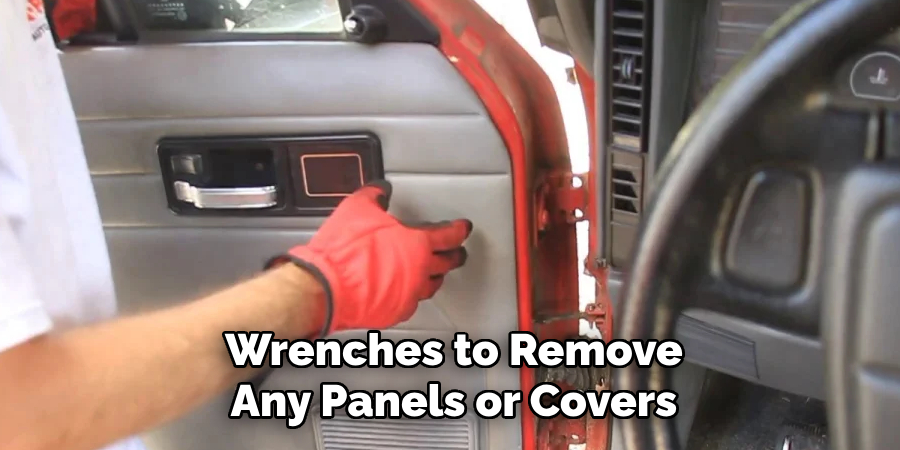
Fuel Pressure Gauge:
A fuel pressure gauge is essential for checking the fuel pressure before and after starting your car.
Fuel Container:
You will need a container to collect any excess fuel from the fuel lines. This container should be gasoline-safe, so avoid using plastic or other materials that may melt or corrode when exposed to gasoline.
10 Step-by-step Guides on How to Start Car After Replacing Fuel Pump
Step 1: Prepare the Work Area
Before starting any work on your car, it is essential to prepare the work area thoroughly. Ensure you have enough space and light to maneuver around and access all parts of the fuel system easily. The area should also be well-ventilated to avoid inhaling any fumes or gases.
Additionally, make sure you have all the tools and materials mentioned above within reach. If you are using a car lift, make sure it is securely positioned and ready for use. You may also want to wear protective gear such as gloves and goggles to avoid any accidents or injuries.
Step 2: Disconnect the Battery
To begin, disconnect the negative terminal of your car battery. This step is crucial as it eliminates the risk of electric shock or fire while working on the fuel system. Be sure to follow proper safety procedures when disconnecting and handling the battery.

But, do not disconnect the positive terminal as this can cause issues with the car’s electrical system. It is also advisable to wait for a few minutes before proceeding with the next steps to allow any residual electricity in the system to dissipate.
Step 3: Relieve Fuel Pressure
Next, you need to relieve the fuel pressure from your car’s fuel system. This step is crucial as it prevents fuel from spraying out when disconnecting or removing any fuel lines. To do this, locate the fuel pump fuse or relay in your car’s fuse box and remove it. Then, start your car and let it run until it stalls.
This indicates that there is no longer any fuel pressure in the system. It is also advisable to perform this step with the help of a fuel pressure gauge to ensure accurate readings. You can also turn off the car’s ignition and try starting it a few more times to release any remaining pressure.
Step 4: Find and Access the Fuel Pump
The location of the fuel pump can vary depending on your car’s make and model. Most modern car models have the fuel pump inside the gas tank, while older cars may have it under the car’s rear or near the engine. Consult your car’s manual to locate the fuel pump, and use your screwdrivers or wrenches as needed to access it.
But be careful not to damage any surrounding parts or fuel lines. The fuel pump may also be secured by bolts or clips, so make sure to remove them as necessary. It is also recommended to clean the area around the fuel pump to avoid any dirt or debris from falling into the gas tank.
Step 5: Remove the Old Fuel Pump
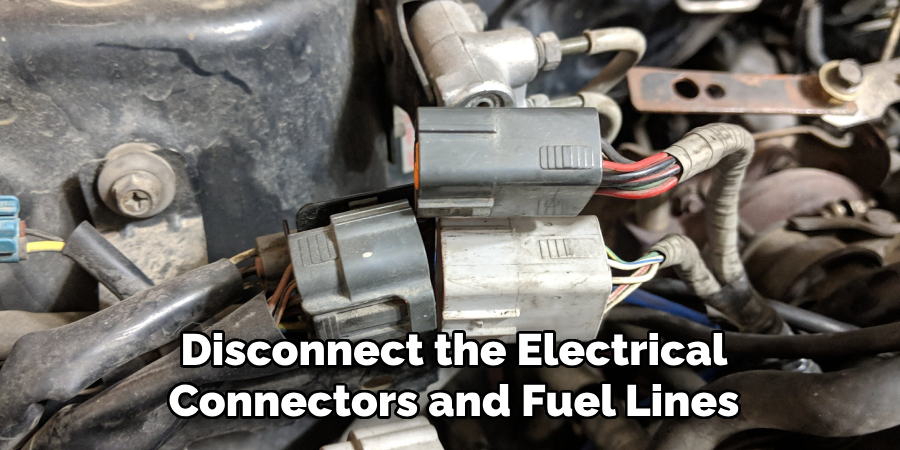
Carefully remove any covers or panels that are blocking access to the fuel pump. Then, disconnect the electrical connectors and fuel lines from the old fuel pump. It is essential to be gentle when handling these components as they can be fragile and easily damaged.
You may also need to unscrew any bolts or clips that secure the fuel pump in place before removing it. If the fuel pump is stuck, you may need to tap it gently with a rubber mallet or pry it loose. Once removed, place the old fuel pump in a safe and secure location. The next steps will guide you through installing the new fuel pump.
Step 6: Prepare the New Fuel Pump
Before installing the new fuel pump, make sure to transfer any necessary components from the old one such as filters or gaskets. It is also essential to clean the surrounding area of any debris or dirt and inspect the fuel lines for any signs of damage.
If necessary, replace any damaged fuel lines before proceeding. You may also want to apply a small amount of grease or petroleum jelly to the fuel pump seals for better sealing and lubrication. But, do not use too much as it can cause issues with the fuel system. You can also refer to the new fuel pump manual for specific instructions.
Step 7: Install the New Fuel Pump
Carefully install the new fuel pump in the same location as the old one. Make sure it is properly secured with bolts or clips and that all electrical connectors and fuel lines are properly connected. It is crucial to double-check all connections and make sure there are no loose or damaged components.
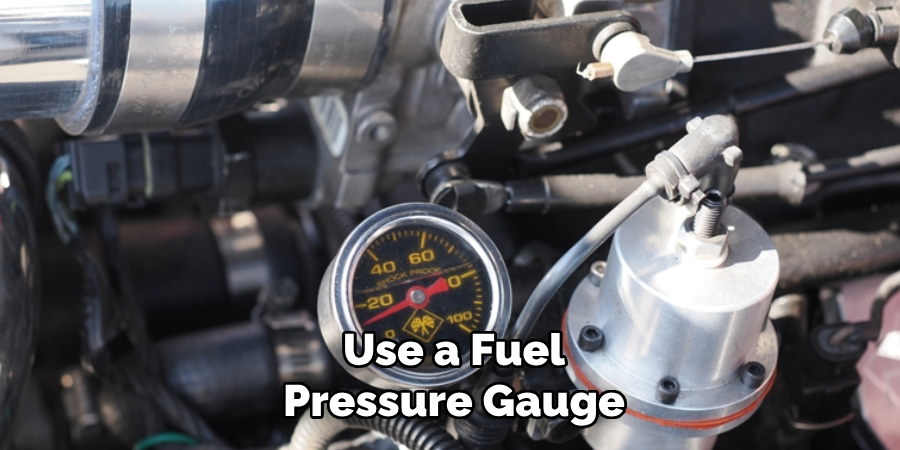
You may also want to use a fuel pressure gauge at this point to ensure that the new fuel pump is functioning correctly. You can also test the fuel pressure before and after starting the car to ensure it is within the recommended range for your vehicle. You may need to make some adjustments or troubleshooting if the pressure readings are not within the expected range.
Step 8: Reconnect the Battery
With the new fuel pump installed, it is now safe to reconnect the negative terminal of your car battery. This step allows the fuel pump to start operating and prepares your car for starting. It is also an excellent time to test the car’s electrical systems and make sure everything is functioning correctly. The fuel pump may also make a humming or whirring noise when it starts, which is normal.
If you do not hear any noise, it could be an indication of a faulty fuel pump or an electrical issue. You may need to troubleshoot further or seek professional help. The fuel pump should also run for a few seconds before turning off, indicating that it is functioning correctly. If it continues to run or does not turn on at all, there may be an issue with the fuel pump or electrical system.
Step 9: Start the Car
With everything in place and properly connected, it is now time to start your car. Turn the key in the ignition and give it a few seconds to start. If your car has a push-button start, press the button and hold it until the engine starts. You may need to repeat this step several times to get the fuel pump working correctly, especially if it is the first time you are starting the car after replacing the fuel pump.
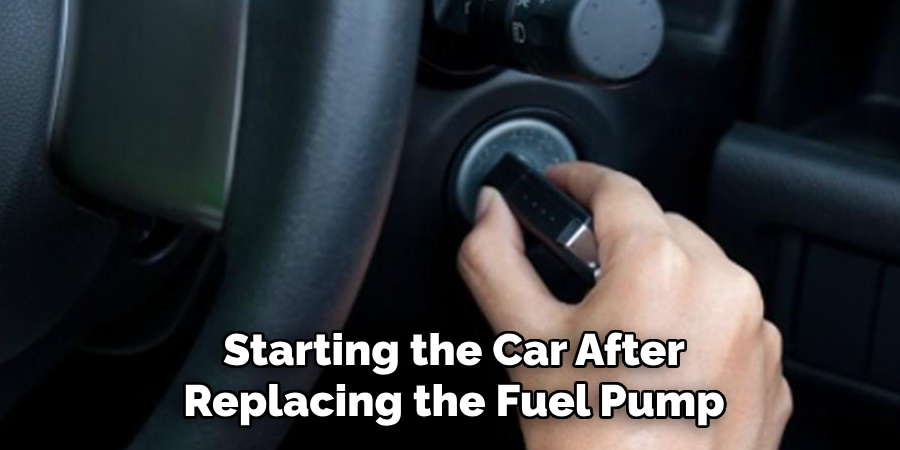
But be patient, as it may take some time for the new fuel pump to build up the necessary pressure in the system. It is also a good idea to check for any fuel leaks or unusual noises when starting the car. The car should start smoothly, and you should not notice any significant changes in its performance. If everything looks good, then congratulations, you have successfully installed a new fuel pump!
Step 10: Test and Inspect
Once your car is started, let it idle for a few minutes while you test and inspect the fuel system. Look for any signs of leakage or unusual noises coming from the fuel pump or lines. If everything looks good, take your car for a short test drive to ensure that the fuel pump is functioning correctly under load.
If you notice any issues, it is essential to address them immediately before they worsen and potentially cause more significant problems. Once you are satisfied with the new fuel pump’s performance, you can consider the replacement process complete.
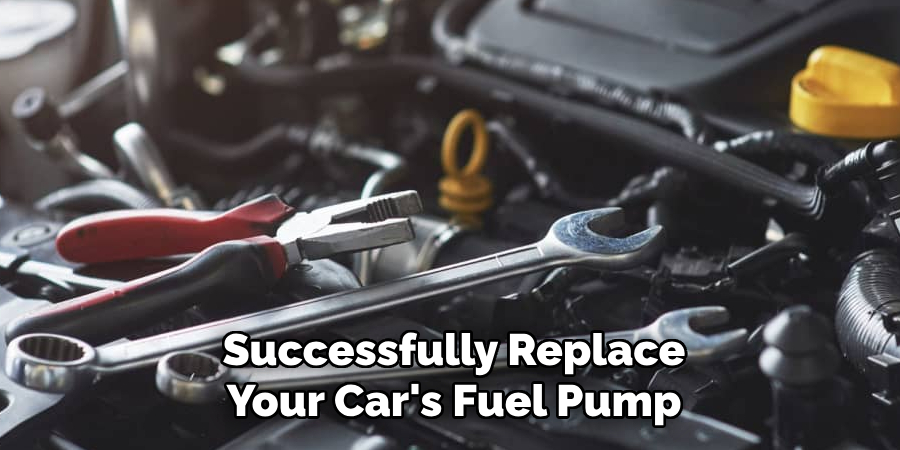
Following these steps on how to start car after replacing fuel pump and proper safety procedures can help you successfully replace your car’s fuel pump. But, if you are uncertain or uncomfortable with performing this task on your own, it is always best to seek professional help.
Fuel system issues can be dangerous and should not be taken lightly. Proper maintenance and regular inspections of your car’s fuel system can prevent unexpected breakdowns and costly repairs in the future. So, make sure to monitor your fuel system and address any issues promptly to keep your car running smoothly.
Do You Need to Use Professionals Help?
If you are not comfortable working on your car or do not have the necessary tools and knowledge, it is always best to seek professional help. Replacing a fuel pump can be a complicated and dangerous task, and any mistakes can result in severe damage to your car or injuries. Professionals have the expertise and equipment needed to complete this task safely and efficiently.
They can also provide valuable insights and recommendations regarding your car’s fuel system, such as potential problems or necessary maintenance. So, if you are unsure about replacing your car’s fuel pump, it is best to leave it to the professionals.
The cost of hiring a professional may be higher than doing it yourself, but it can save you from potentially costly repairs in the future. Additionally, some car insurance policies may cover the cost of professional repairs, so it is worth checking with your provider.
Additional Tips: Safety First
- Always Disconnect the Car Battery Before Starting Any Work on Your Car’s Fuel System to Prevent Electrical Hazards.
- Wear Appropriate Protective Gear, Such as Gloves and Eyewear, When Working With Fuel to Avoid Direct Contact With Skin or Eyes.
- Make Sure to Have a Fire Extinguisher Nearby in Case of Emergencies.
- Avoid Smoking or Using Open Flames Near the Car While Working on the Fuel System.
- Properly Dispose of Any Old or Damaged Fuel Pump and Related Components in a Safe and Environmentally Friendly Manner.
- Consult Your Car’s Manual for Specific Instructions and Precautions When Replacing the Fuel Pump, as Different Cars May Have Varying Procedures.
- If You Are Not Familiar With Car Mechanics, It is Best to Have Someone Knowledgeable or Experienced Assist You During the Replacement Process.
- Always Double-check All Connections and Test the Fuel System Before Starting Your Car to Ensure Everything is Working Correctly.
By following these additional safety tips, you can minimize potential risks and complete the fuel pump replacement process safely. Remember, safety should always be a top priority when working on any car maintenance tasks.
Frequently Asked Questions
Q: What is a Fuel Pump?
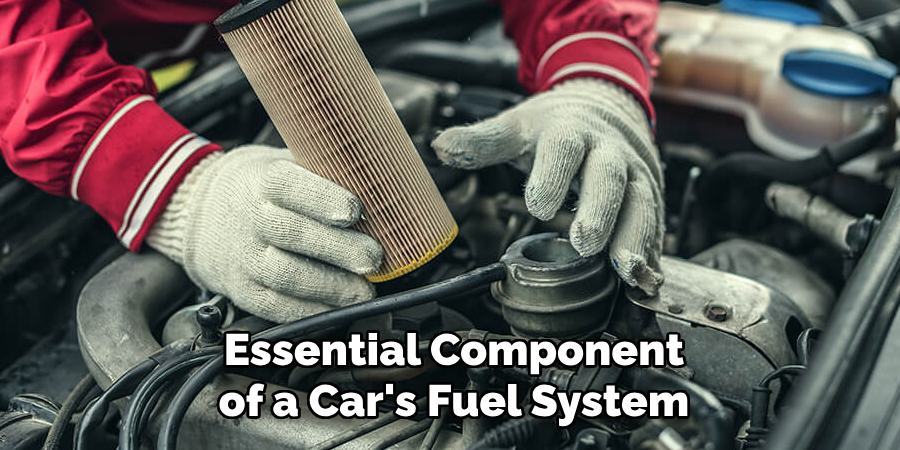
A: A fuel pump is an essential component of a car’s fuel system, responsible for pumping gasoline from the tank to the engine. It ensures that the correct amount of fuel reaches the engine at a consistent pressure to maintain proper combustion and vehicle performance.
Q: Why Do You Need to Replace a Fuel Pump?
A: Over time, fuel pumps can wear out due to constant use and exposure to gasoline. Additionally, contaminants in the fuel can damage the pump’s internal components, leading to decreased performance or complete failure. Replacing a worn-out fuel pump is crucial for maintaining the proper functioning of a car’s engine.
Q: What are the Signs of a Failing Fuel Pump?
A: Some common symptoms of a failing fuel pump include difficulty starting the car, engine misfires, lack of power while accelerating, and sudden stalling while driving. If you notice any of these signs, it could indicate that your fuel pump needs to be replaced.
Q: Can I Replace a Fuel Pump Myself?
A: While it is possible to replace a fuel pump yourself, it is recommended to have it done by a professional mechanic. The process can be challenging and requires the use of specialized tools and knowledge about the car’s fuel system. It is crucial to ensure that the replacement is done correctly to avoid any potential issues or safety hazards.
Conclusion
In summary, on how to start car after replacing fuel pump, successfully starting your car after replacing the fuel pump hinges on a meticulous approach to the installation process. By priming the fuel system, checking for leaks, and ensuring the pump’s functionality, you’re laying a solid foundation for dependable operation. Always adhere to safety guidelines and consider consulting a professional if you encounter uncertainties during the process.
With the steps outlined in this guide, you are now equipped to start your car and embark on a smooth driving experience post-fuel pump replacement. Remember, regular maintenance is key to your vehicle’s longevity and performance.

